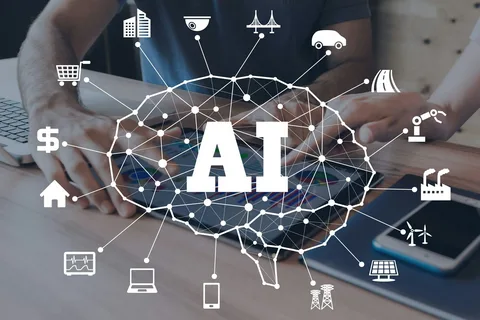As artificial intelligence (AI) ,AI Under Control systems become increasingly powerful and embedded in our everyday lives—from healthcare and finance to national security and social media—questions of ethics, safety, transparency, and accountability have taken center stage. Enter AI governance platforms: dedicated systems designed to monitor, manage, and guide the development, deployment, and evolution of AI technologies in a responsible and ethical manner.
What Is AI Governance?
AI governance refers to the frameworks, policies, tools, and processes that ensure artificial intelligence systems are developed and used in ways that align with ethical principles, legal standards, and societal values. This includes issues such as:
- Bias and fairness
- Transparency and explainability
- Data privacy and security
- Safety and reliability
- Accountability and oversight
- Alignment with human values
Governance is not merely a regulatory burden—it’s a necessary infrastructure for ensuring that the benefits of AI can be realized without causing harm.
The Emergence of AI Governance Platforms
Although traditional control mechanisms such as audits, policies, and legal reviews have their place, the magnitude, pace, and complexity of today’s AI require more advanced solutions. That is where AI governance platforms enter the scene.
These are software platforms or frameworks that deliver automated, scalable, and systematic means of incorporating governance across the entire AI lifecycle from design and training through deployment and monitoring.
Core Features of AI Governance Platforms

- Model Auditing and Monitoring
- Continuous assessment of model performance.
- Detection of concept drift, bias, and anomalies.
- Alerts when models behave unpredictably.
- Bias and Fairness Checks
- Tools to identify and mitigate algorithmic bias.
- Support for fairness metrics across different demographic groups.
Explainability and Transparency
- Integration with explainable AI (XAI) tools.
- Visualization of model decisions and feature importance.
Data Lineage and Provenance
- Tracking the origin, quality, and flow of data.
- Maintaining audit trails for datasets and models.
Risk Assessment and Compliance Management
- Risk scoring for AI applications.
- Documentation to meet regulatory requirements (e.g., GDPR, AI Act).
Model Versioning and Governance Workflows
- Lifecycle management tools for models.
- Role-based access control and review workflows.
Ethical and Human Oversight Integration
- Interfaces for human feedback and override.
- Ethics checklists and ethical impact assessments.
Leading AI Governance Platforms and Tools
Several tech companies, startups, and open-source communities have begun building or contributing to AI governance platforms. Some notable examples include:
- IBM Watson OpenScale: Offers bias detection, explainability, and monitoring for deployed models.
- Google’s Vertex AI + What-If Tool: Helps visualize model behavior and detect fairness issues.
- Microsoft Responsible AI Dashboard: A suite of tools for interpretability, fairness, and data exploration.
- Fiddler AI: A dedicated platform focused on model explainability and monitoring.
- Truera: Provides insights into model performance, fairness, and drift.
- Aporia: Real-time model monitoring and governance for AI in production.
Regulatory and Ethical Mandates

Governments and global institutions are rapidly headed in the direction of regulation. The EU Artificial Intelligence Act, U.S. Blueprint for an AI Bill of Rights, and OECD AI Principles are a few of the initiatives that are driving enforceable standards.
AI governance platforms are therefore becoming crucial for organizations that wish to remain ahead of compliance requirements. Such platforms offer the documentation, transparency, and traceability necessary to meet the requirements of auditors, regulators, and stakeholders.
Challenges in Building Effective Governance Platforms
Despite their importance, AI governance platforms face several challenges:
- Standardization: Lack of universally accepted standards makes interoperability difficult.
- Scalability: Governance needs to scale with model complexity and deployment environments.
- Context Sensitivity: Ethical decisions often depend on nuanced, context-specific judgments.
- Cultural and Organizational Barriers: Governance requires buy-in from engineers, business leaders, and policymakers alike.
The Future of AI Governance Platforms
As AI systems grow more autonomous, general-purpose, and embedded into critical infrastructure, governance will need to be proactive rather than reactive. Emerging trends include:
- Integration with AI Development Tools: Embedding governance natively within platforms like Jupyter, MLflow, or Hugging Face.
- AI for AI Governance: Using AI to monitor and audit other AI systems, creating self-governing loops.
- Human-Centered Design: Emphasizing the role of diverse stakeholders, from ethicists to end-users, in governance frameworks.
- Global Collaboration: Platforms that enable international cooperation on AI standards and ethics.




